Microwave cleaning lemon hack: Sounds too good to be true, right? I thought so too, until I tried it myself! Let’s be honest, cleaning the microwave is one of those chores we all dread. It’s a sticky, splattered mess that seems to defy even the strongest cleaners. But what if I told you there’s a simple, natural, and incredibly effective way to banish that microwave grime using just a lemon and your microwave itself?
The use of citrus for cleaning isn’t new. In fact, our grandmothers probably knew this trick! Historically, lemons have been valued not only for their culinary uses but also for their potent cleaning properties. Their acidity helps to break down grease and grime, leaving behind a fresh, clean scent. Think of it as a natural, fragrant alternative to harsh chemicals.
Why do you need this microwave cleaning lemon hack in your life? Because it saves you time, money, and effort! No more scrubbing for hours or breathing in toxic fumes. This DIY method is quick, easy, and uses ingredients you likely already have in your kitchen. Plus, it’s a fantastic way to avoid harsh chemicals, making it safer for your family and the environment. So, ditch the elbow grease and let’s get that microwave sparkling clean with this simple, yet powerful trick!
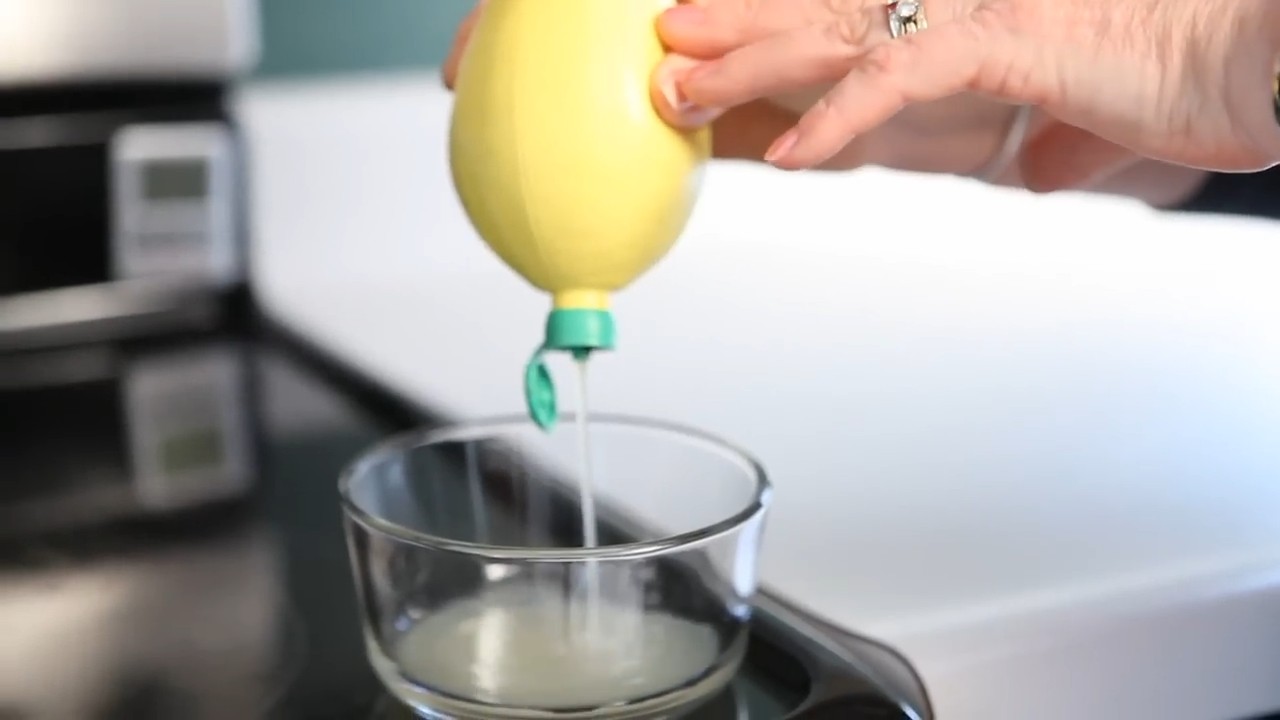
DIY Microwave Cleaning with Lemon: A Fresh and Easy Hack
Hey everyone! I’m so excited to share this super simple and effective DIY hack for cleaning your microwave using just a lemon and a few other household items. Trust me, this is a game-changer! No more harsh chemicals or scrubbing for hours. This method uses the natural power of lemon to loosen grime and leave your microwave smelling fresh and clean. Let’s get started!
What You’ll Need:
* 1 Lemon
* 1 Cup of Water
* Microwave-safe Bowl
* Clean Sponge or Cloth
* Optional: A few drops of your favorite essential oil (lemon or lavender work great!)
Step-by-Step Instructions:
1. Prepare the Lemon: First, grab your lemon. You can either cut it in half or slice it into a few pieces. I personally prefer slicing it because I think it releases more of the juice and oils. If you’re using essential oils, now’s the time to add a few drops to the water.
2. Combine Lemon and Water: Take your microwave-safe bowl and pour in the cup of water. Add the sliced or halved lemon to the water. Make sure the lemon is submerged as much as possible. This is where the magic happens!
3. Microwave the Mixture: Place the bowl with the lemon and water mixture into your microwave. Set the timer for 3 minutes on high power. You want the water to boil and create steam inside the microwave. This steam is what will loosen all the stuck-on food and grime.
4. Let it Stand (Important!): Once the microwave stops, DO NOT OPEN THE DOOR IMMEDIATELY! This is a crucial step. Let the bowl sit inside the microwave with the door closed for another 5-10 minutes. The steam needs time to work its magic and really penetrate the grime. I usually set a timer so I don’t forget.
5. Carefully Remove the Bowl: After the standing time, carefully remove the bowl from the microwave. Be cautious, as the bowl and the water will be hot. Use oven mitts or a towel to protect your hands.
6. Wipe Down the Interior: Now comes the satisfying part! Take your clean sponge or cloth and wipe down the interior of the microwave. You’ll be amazed at how easily the grime comes off. The steam from the lemon water has loosened everything, making it a breeze to clean. Pay special attention to any stubborn spots. You might need to apply a little extra pressure, but you shouldn’t have to scrub too hard.
7. Clean the Turntable and Roller Ring: Remove the turntable and roller ring from the microwave. Wash them with warm, soapy water. Rinse them thoroughly and dry them before placing them back in the microwave. These parts often accumulate food splatters, so it’s important to clean them regularly.
8. Dry the Interior: Once you’ve wiped down the entire interior, use a clean, dry cloth to dry any remaining moisture. This will help prevent water spots and keep your microwave looking its best.
9. Enjoy Your Clean and Fresh Microwave! That’s it! You’ve successfully cleaned your microwave using the power of lemon. Your microwave should now be sparkling clean and smelling fresh.
Troubleshooting and Tips:
* Stubborn Grime: If you have some really stubborn grime that’s not coming off easily, try these tips:
* Microwave for a Longer Time: Increase the initial microwaving time to 4-5 minutes.
* Add Vinegar: Add a tablespoon of white vinegar to the lemon and water mixture for extra cleaning power.
* Use a Scrubbing Sponge: For really tough spots, use a scrubbing sponge, but be gentle to avoid scratching the interior of the microwave.
* Repeat the Process: If necessary, repeat the entire process. Sometimes, a second round is all it takes to get your microwave completely clean.
* Lemon Alternatives: While lemon is my go-to, you can also use other citrus fruits like limes or oranges. They have similar cleaning properties and will leave your microwave smelling great.
* Preventative Measures: To keep your microwave clean, try these tips:
* Cover Food: Always cover your food when microwaving to prevent splatters.
* Wipe Up Spills Immediately: Clean up any spills as soon as they happen to prevent them from hardening.
* Regular Cleaning: Clean your microwave at least once a week to prevent grime from building up.
* Smell lingers: If the lemon smell is too strong for you, leave the microwave door open for a few hours to air it out. You can also place a small bowl of baking soda inside the microwave to absorb any lingering odors.
* Bowl Material: Make sure the bowl you are using is indeed microwave safe. Some plastics can melt or warp in the microwave. Glass or ceramic bowls are generally the safest options.
* Safety First: Always be careful when handling hot bowls and water. Use oven mitts or a towel to protect your hands. Also, never microwave metal objects, as they can cause sparks and damage your microwave.
Why This Hack Works:
The magic behind this hack lies in the citric acid found in lemons. Citric acid is a natural cleaning agent that helps to break down grease and grime. When the lemon and water mixture is heated in the microwave, the steam carries the citric acid throughout the interior, loosening the stuck-on food particles. The steam also helps to soften the grime, making it easier to wipe away. Plus, the lemon leaves a fresh, clean scent, which is a bonus!
Benefits of Using This Method:
* Natural and Non-Toxic: This method uses only natural ingredients, so you don’t have to worry about harsh chemicals or fumes.
* Easy and Convenient: It’s a quick and easy way to clean your microwave without a lot of scrubbing.
* Cost-Effective: Lemons are relatively inexpensive, making this a budget-friendly cleaning solution.
* Fresh Scent: The lemon leaves your microwave smelling fresh and clean.
* Safe for Your Microwave: This method is safe for all types of microwaves.
Extra Tips for a Sparkling Clean Microwave:
* Clean the Outside: Don’t forget to clean the outside of your microwave as well. Use a damp cloth to wipe down the exterior and the control panel.
* Clean the Vent: The vent on your microwave can accumulate dust and grease. Use a vacuum cleaner with a brush attachment to clean the vent regularly.
* Check the Door Seal: Make sure the door seal is clean and intact. A damaged door seal can cause the microwave to leak radiation.
* Use a Microwave Cover: Invest in a microwave cover to prevent splatters and keep your microwave cleaner for longer.
Frequently Asked Questions (FAQs):
* Can I use bottled lemon juice instead of a fresh lemon? While fresh lemon is ideal, you can use bottled lemon juice in a pinch. Use about 2-3 tablespoons of lemon juice per cup of water. However, fresh lemon will provide a better scent and cleaning power.
* How often should I clean my microwave using this method? I recommend cleaning your microwave at least once a week, or more often if you use it frequently.
* Can I use this method to clean other appliances? While this method is specifically designed for microwaves, you can use a similar approach to clean other appliances like ovens. However, be sure to research the specific cleaning requirements for each appliance before using this method.
* What if I don’t have a microwave-safe bowl? If you don’t have a microwave-safe bowl, you can use a glass measuring cup or any other container that is specifically labeled as microwave-safe.
* Can I add baking soda to the lemon and water mixture? Yes, you can add a teaspoon of baking soda to the mixture for extra cleaning power. Baking soda is a natural deodorizer and can help to remove stubborn stains.
I hope you found this DIY microwave cleaning hack helpful! It’s a simple, effective, and natural way to keep your microwave clean and fresh. Give it a try and let me know what you think! Happy cleaning!
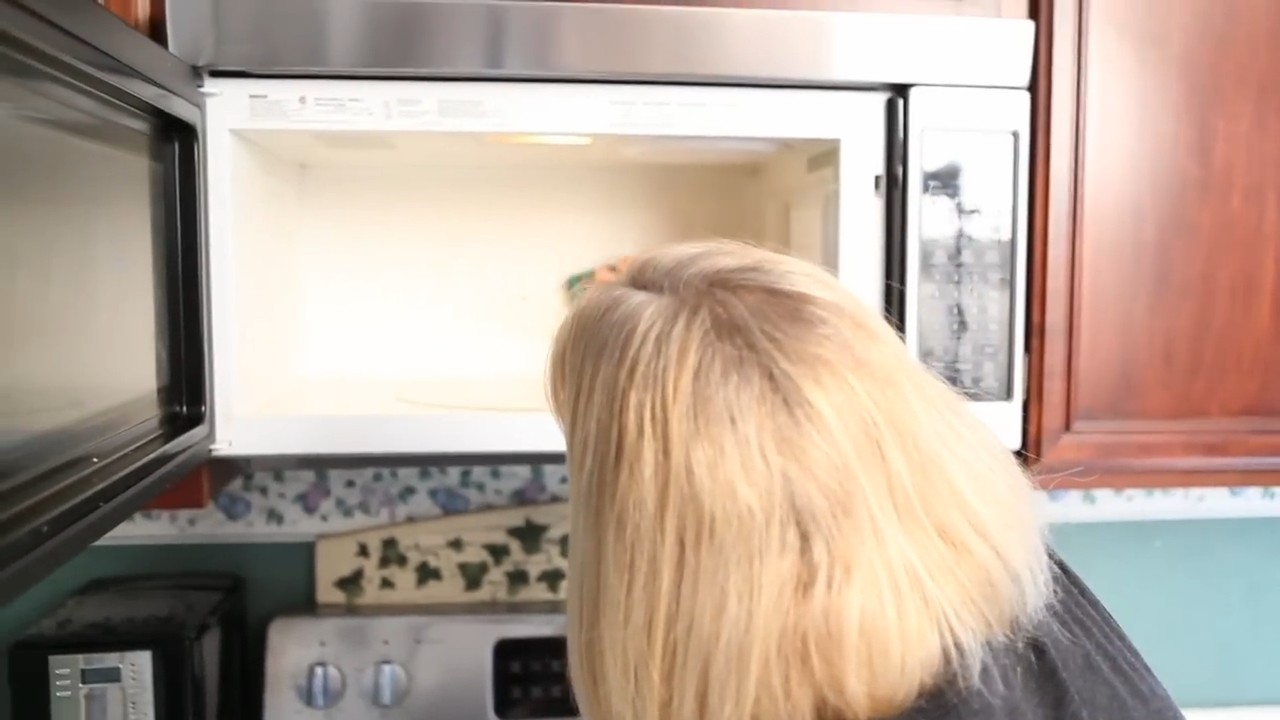
Conclusion
So, there you have it! The microwave cleaning lemon hack is not just a cleaning method; it’s a game-changer for your kitchen routine. It’s a simple, natural, and incredibly effective way to banish stubborn splatters, lingering odors, and that general feeling of “ugh” that can plague your microwave. Forget harsh chemicals and hours of scrubbing – this method harnesses the power of steam and citric acid to do the heavy lifting for you.
Why is this a must-try? Because it’s fast, eco-friendly, and leaves your microwave smelling fresh and clean, not like a chemical factory. Think about it: no more breathing in fumes, no more worrying about residue contaminating your food, and no more spending your precious time scrubbing away at hardened messes. This hack is a win-win-win!
But the beauty of this trick lies in its adaptability. While lemon is the star of the show, feel free to experiment with variations to suit your preferences and what you have on hand.
* Orange Power: Substitute lemon slices with orange slices for a slightly sweeter, citrusy scent. Orange peels also contain powerful cleaning agents.
* Vinegar Boost: Add a tablespoon of white vinegar to the water along with the lemon for extra degreasing power. Be mindful of the vinegar smell, though; it dissipates quickly.
* Herb Infusion: Toss in a sprig of rosemary or thyme for a subtle, herbal aroma that will freshen up your entire kitchen.
* Lime Time: If you’re out of lemons, limes work just as well! They offer a similar level of acidity and a refreshing scent.
* Essential Oil Enhancement: After the steaming process, wipe down the microwave with a cloth dampened with water and a drop or two of your favorite citrus essential oil (lemon, orange, grapefruit). This will leave a lingering, pleasant fragrance.
The key is to ensure the water is boiling and creating steam. The steam is what loosens the grime, making it incredibly easy to wipe away. Remember to always use a microwave-safe bowl and handle the hot bowl with care.
We wholeheartedly encourage you to give this microwave cleaning lemon hack a try. It’s a small change that can make a big difference in your kitchen hygiene and overall cleaning experience. You’ll be amazed at how effortlessly your microwave transforms from a splattered mess to a sparkling clean appliance.
Don’t just take our word for it, though! Try it out for yourself and see the magic unfold. And most importantly, we want to hear about your experience! Share your before-and-after photos, your favorite variations, and any tips or tricks you discover along the way. Let’s create a community of sparkling clean microwaves, one lemon at a time! Share your experience in the comments below or tag us on social media using #MicrowaveLemonHack. We can’t wait to see your results!
Frequently Asked Questions (FAQ)
Is the microwave cleaning lemon hack safe for all microwaves?
Yes, the microwave cleaning lemon hack is generally safe for all types of microwaves, including those with stainless steel interiors. The steam created by the boiling water and lemon mixture is gentle and non-abrasive, so it won’t damage the interior surfaces. However, it’s always a good idea to check your microwave’s user manual for any specific cleaning recommendations or warnings. If you have any concerns, you can test the hack on a small, inconspicuous area first. Always use a microwave-safe bowl to avoid any accidents.
How often should I use the microwave cleaning lemon hack?
The frequency of using this hack depends on how often you use your microwave and how messy it gets. For most households, cleaning the microwave with the lemon hack once a week or every other week is sufficient to keep it clean and fresh. If you frequently reheat messy foods or notice splatters building up quickly, you may want to clean it more often. Conversely, if you rarely use your microwave, you can extend the cleaning intervals. Regular cleaning with this method prevents grime from hardening and becoming difficult to remove.
Can I use bottled lemon juice instead of fresh lemons?
While fresh lemons are preferred for their natural oils and fragrance, you can use bottled lemon juice as a substitute in a pinch. Use about 2-3 tablespoons of bottled lemon juice in the water. Keep in mind that bottled lemon juice may not have the same cleaning power or aroma as fresh lemons, but it will still help to loosen grime and freshen up your microwave. If you opt for bottled juice, consider adding a few drops of lemon essential oil for a more potent scent.
What if the stains are really stubborn and don’t come off easily?
If you’re dealing with particularly stubborn stains, there are a few things you can try. First, ensure that the water is boiling vigorously and creating plenty of steam. You may need to microwave the mixture for a longer period (up to 5 minutes) to generate more steam. After the steaming process, let the microwave sit for a few minutes before wiping it down. This allows the steam to further loosen the grime. For tough spots, use a non-abrasive sponge or cloth and gently scrub the area. You can also try making a paste of baking soda and water and applying it to the stains before wiping them away.
What if I don’t have lemons? What other alternatives can I use?
If you don’t have lemons on hand, you can use other citrus fruits like limes or oranges. You can also use a mixture of water and vinegar (equal parts) as a substitute. Vinegar is a powerful degreaser and can effectively loosen grime. Another option is to use a few drops of dish soap in the water. However, be sure to rinse the microwave thoroughly after cleaning to remove any soap residue.
How do I prevent splatters in the microwave in the first place?
Prevention is key to keeping your microwave clean! Always cover your food with a microwave-safe lid or plastic wrap (make sure to vent it to prevent explosions). You can also use a paper towel to cover dishes. This will help to contain splatters and prevent them from sticking to the interior walls. Another tip is to avoid overfilling containers, as this can lead to spills. Finally, wipe up any spills or splatters immediately to prevent them from hardening and becoming difficult to remove.
Is it safe to use the microwave immediately after cleaning it with the lemon hack?
Yes, it is perfectly safe to use the microwave immediately after cleaning it with the lemon hack. The steam and lemon mixture are non-toxic and leave no harmful residue. However, it’s always a good idea to wipe down the interior thoroughly with a clean, damp cloth to remove any remaining moisture or lemon residue. This will ensure that your food doesn’t pick up any unwanted flavors or scents.
Can I reuse the lemon water for cleaning other surfaces?
While the lemon water may have some cleaning properties, it’s best to discard it after cleaning the microwave. The water will likely contain dissolved grime and food particles from the microwave, so it’s not ideal for cleaning other surfaces. However, you can compost the used lemon slices, as they are biodegradable and can add nutrients to your garden.

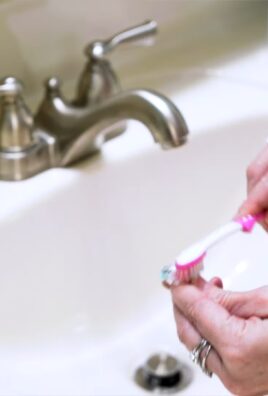
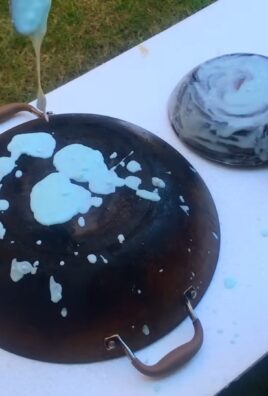
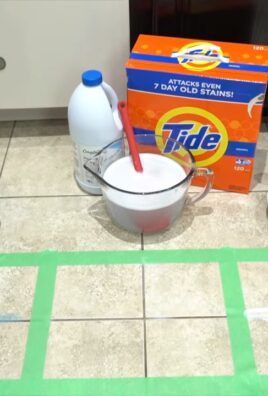
Leave a Comment